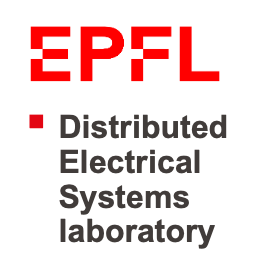H-LSM Research Project
Homopolar Linear Synchronous Motor for Propulsion and Levitation of Hyperloop Systems
Description
As transportation becomes increasingly electrified and efforts intensify to cut greenhouse gas emissions, high-speed rail has emerged as a viable alternative to short-haul air travel. A further advancement of this concept is the magnetic
levitation (maglev) train, which uses linear electric motors (LEMs) for propulsion and enables very high operating speeds. Unlike traditional rail systems, maglev trains do not physically contact the track or guideway. This gap can
be produced either directly by the LEM or through an auxiliary levitation mechanism.
Maglev technologies can be categorised into two main types based on the guideway design:
- An active guideway refers to the presence of an excitation or moving field on the track.
- A passive guideway is composed exclusively of conductive or ferromagnetic material, often referred to simply as the rail, offering the potential for lower infrastructure costs—typically the dominant expense in maglev deployment.
For passive guideway maglevs, the linear induction motor (LIM) has long been considered suitable for both propulsion and levitation. However, its declining performance at high speeds, coupled with a low efficiency–power factor product and modest force-to-weight ratios, has confined its use mainly to low-speed operations. These drawbacks have pushed investigations of alternative technologies. One such alternative, the homopolar linear synchronous motor (H-LSM), though requiring a more complex rail design, offers superior efficiency–power factor characteristics and significantly higher force-to-weight ratios, making it a promising candidate for high-speed maglev applications.
Publications
2024
Authors:
Lucien Pierrejean;
Simone Rametti;
André Hodder;
Mario Paolone
Abstract:
Linear electromagnetic motors (LEMs) have been proposed, developed, and used to propel high-speed (i.e., speed >100 m/s) levitating vehicles. However, few real implementations have demonstrated the feasibility of these machines at such speeds. Furthermore, LEMs are expected to be enabling technologies for levitating vehicles traveling at near sonic speed, such as the hyperloop concept. This article presents a systematic review of modeling, design, and performance assessment of LEMs used (or proposed) for the propulsion of levitating high-speed vehicles. Among all the possibilities, those that have received the most attention since the 1960s, along with the first magnetic levitation train concepts, are discussed. Classified by operating principle and topology, the LEMs are compared in terms of design and performance via specific key performance indicators (KPIs). The performance of the various proposed LEMs is assessed on the basis of data available in the literature.
Published in: IEEE Transactions on Transportation Electrification
Date of publication: June 19, 2024


